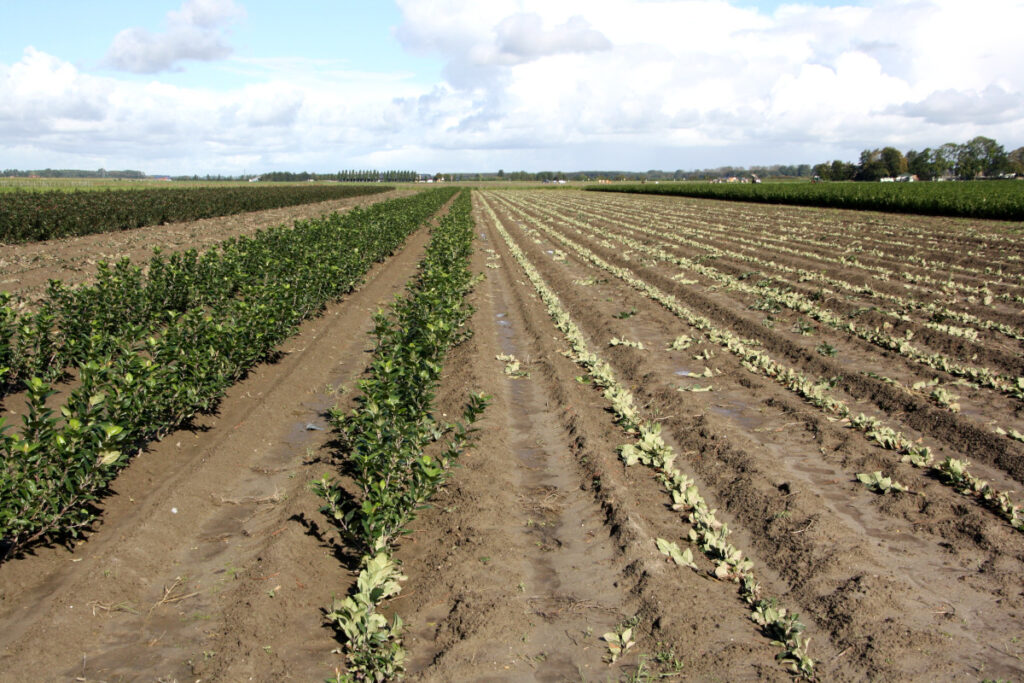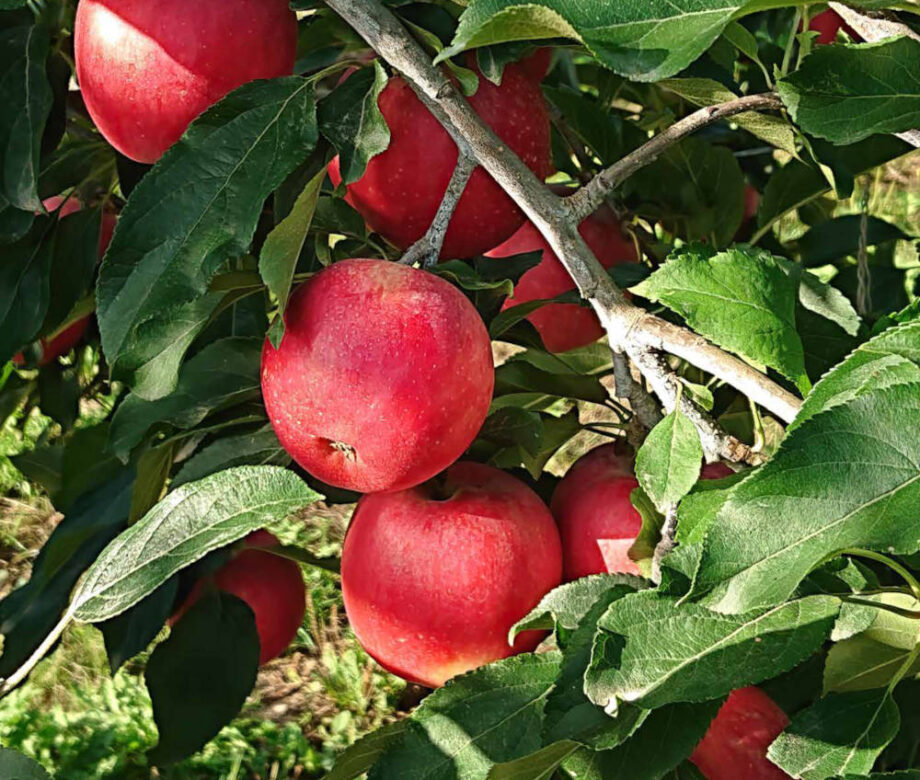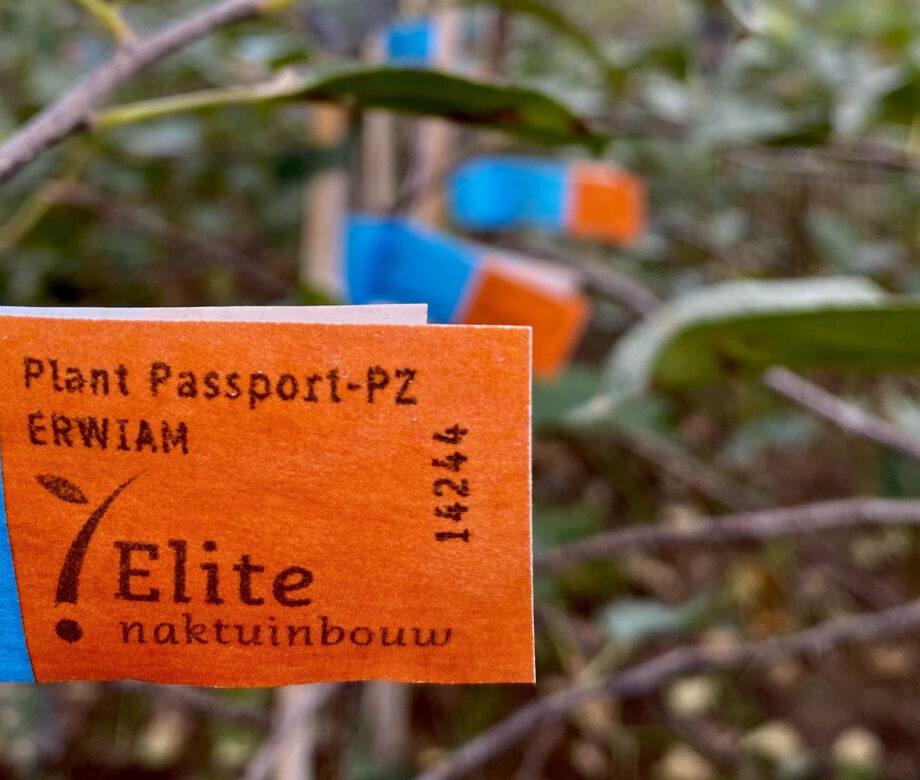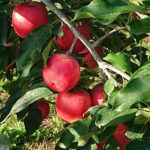Rootstocks are the base and roots of the tree. Many of the tree’s characteristics depend on the rootstock used: growth strength, adaption to soil type (like drought or poor soils) fruit size, fruit production, when the tree will start producing apples, etc. But, how do fruit tree nurseries grow these rootstocks?
Rootstocks are commonly propagated by mound layering on stoolbeds. In this scenario we use our apple rootstocks as example. The mother plants, which in our case are all virus free certified basis material, are planted in a 45 degree angle in spring time. The rootstocks are not too thick, because we need to ‘layer’ them later on.

In the first year, the obliquely planted rootstocks are bend down and braided together as a bed (= stoolbed). This is done in September/October.
The new shoots growing out of the layered mother plants, are partially covered by a mix of sawdust and compost. Only the bottom part where the roots will grow is covered. After the sawdust/compost is added, the beds are mounded with special machinery. The sawdust/compost is tightened around the section of the plant where the roots are needed. It will stimulate the growing of roots on the shoots above the layered mother plants. This process is repeated every year. The stoolbed or mother garden remain productive for more than 25 years.
At the end of the growing season, the shoots are fully grown, matured and ready to harvest. The new grown roots need time to harden. If the rootstocks are harvested too early, the softer not well matured roots will break. This will result in less roots on the harvested rootstocks.
Harvesting is done by cutting of the rootstocks just above the layered mother plants. The layered plants are left in the soil, and will be used for a new production round next year. The harvested rootstocks, one year old and referred to as 0+1, are brought in and firstly sorted on quality. We check the number of the roots, the straightness of the plant, the length of the plant (we need at least 40 cm/15.8 inches length for grafting) and remove the dead plants. This is done with no automatization or machinery, just the human eye.
After the ‘pre’ grading on quality, the rootstocks are mechanically graded on size. With size we refer to the thickness of the rootstocks in mm above the root collar. Commonly the rootstocks are graded in 4-6, 6-8, 8-10, 10-12, 12-14, 14+. Based on clients request, we can adjust this for example to odd sizes as 3-5, 5-7, 7-9, etc. The smaller rootstocks, e.g. 4-6mm, are replanted to grow another year in thickness. This will give a two year old rootstocks, referred to as 1+1, and suitable for grafting.
The 6-8mm sized rootstocks are mainly used for summer propagation (chip budding/oculation). Rootstocks from 8mm and up, are used for table grafting. Another known term is bench grafting.
The rootstocks we produce, are used for our own fruit tree production and are provided to customers worldwide. All our production fields are under supervision of Naktuinbouw. Naktuinbouw assesses the identity, quality and health of propagating material. They do this through research, inspections and tests. Naktuinbouw is an Independent Administrative Body (ZBO) and is supervised by the Ministry of Agriculture.
Are you interested in high quality rootstocks? Please do not hesitate to contact us.




